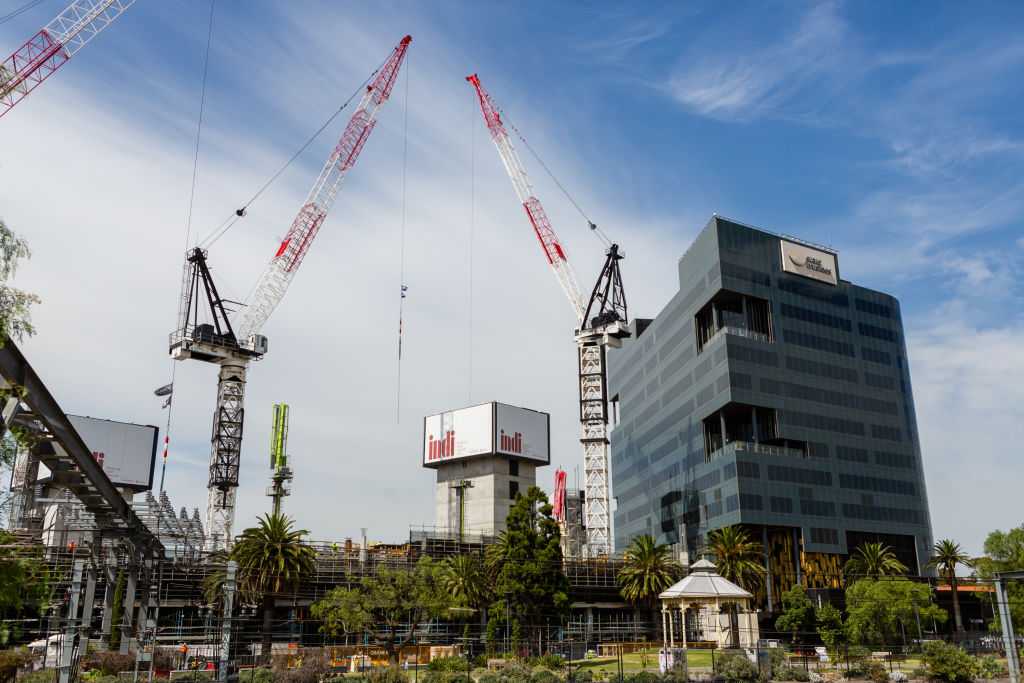
Government’s $91m tradie plan only ‘modest’ boost for home building
The federal government’s $91 million investment to boost the number of skilled construction workers will only give minor stimulus to a housing sector challenged by soaring demand, economists and industry leaders say.
The plan to add almost 22,000 new workers would equal less than 2 per cent of the existing construction workforce of more than 1.3 million, economist Carlos Cacho said.
“It’s pretty modest. This is really a long-term problem that is going to take many years to rectify,” said Mr Cacho, the chief economist at investment bank Jarden.
It was also not clear how quickly the extra workers would be able to get up to speed and play a meaningful role in tackling the Albanese government’s target of 240,000 homes a year, on average, for the next five years.
The increasingly shaky target of developing 1.2 million new homes is a crisis of surging demand and a construction workforce facing its own challenges of strong demand from infrastructure for the same resources, and the retirement of skilled Baby Boomer tradesmen.
“Despite a sizeable workforce of 1.35 million Australians, the industry has an annual exit rate of 8 per cent, and we are only replacing half of those people per year,” said Master Builders Australia chief executive Denita Wawn.
Immigration rules that exclude foreign tradies from the country’s fast-track visa system have compounded the shortage.
The increase in potential workers will come from $62.4 million in next week’s federal budget to create 15,000 fee-free training places in TAFE and VET vocational colleges; $26.4 million to create 5000 pre-apprenticeship programs; and $1.8 million to speed up the skills assessment of 1900 potential migrants.
“To build more homes we need more tradies, and that is what this announcement will deliver,” Housing Minister Julie Collins said on Wednesday in a joint announcement with Skills and Training Minister Brendan O’Connor.
The investment drew applause from the sectors most affected by the shortages.
Ms Wawn said making it easier for skilled migrants – who often found the existing processes too long and costly to have their qualifications recognised – to work in home building was crucial.
“For many migrants, it is simply too hard to have their professional capacity recognised to work in a trade in Australia, and they are instead in roles that present fewer hurdles to obtain,” she said.
“The Parkinson Migration Review found skills assessments or qualification recognition can take up to 18 months and cost nearly $10,000; time and money people simply don’t have in this economic climate.”
Property Council of Australia head of advocacy and policy Matthew Kandelaars said the industry needed a bigger boost.
“While we welcome funding to streamline skills assessments for potential migrants in construction trades, we can and must set our sights even higher,” he said.
“Only 1.8 per cent of our skilled migrant intake has been comprised of new construction workers over the past two decades, falling significantly short of what we need.”
The Housing Industry Association said next week’s budget needed to continue existing arrangements that subsidised companies for taking on apprentices.
“Without an employer, there is no apprentice, and the financial incentives currently in place that have encouraged the employment of an apprentice and improve retention, have proved invaluable to helping the construction industry to access more workers,” HIA managing director Jocelyn Martin said.
Mr Cacho said while the labour shortage was a problem, it was less of an issue than productivity, or how efficiently the sector could build new homes.
“That is a bigger issue – how long it takes to build. That’s a bigger problem than just getting people on site.”











